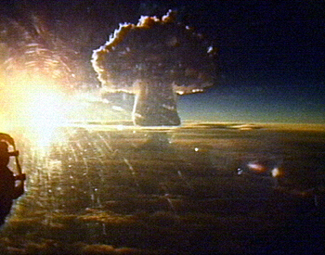There was a time when a navy, merchant or military, consisted of hundreds of ships, each manned by hundreds of crew. When I was a child in the 1950s, Sheerness was a thriving dockyard town. Everyone in town knew at least one soldier or sailor, either as a relative or as a friend.
There was a saying: "Join the navy and see the world." Todays sailors tend to see more of graphics displays. Much of my childhood knowledge of other lands, peoples and languages was gleaned from conversations with people who had either travelled themselves or who had gained their knowledge directly from travellers. Many non-fiction books that I read were written by travellers and explorers. Darwin springs readily to mind.
Today we have far fewer ships. These have smaller crews. Mostly, those crews do not gain their knowledge of location and weather from the 'mark one eyeball', but from satelite data and pre-digested weather reports. Civilians who travel on cruise ships tend to see more of bars than local geography, history and climate.
In the 1950s and 1960s, many people were eyewitnesses to hydrogen bomb tests. When I was a child it was commonly accepted - true or not - that continued hydrogen bomb testing in the atmosphere would most probably affect global weather and would almost certainly affect the health of future generations. First-hand reports of conscript eyewitnesses and credible news coverage led to a public outcry against the testing of hydrogen bombs.
Today's global village has fewer old-style explorers and more armchair pundits. (I do not accept that people who vacation in a bar or hotel are real explorers.) The non-explorers outnumber the explorers, and so their views hold sway in politics.
The damage done by humans to their own environment is very well documented. Unfortunately, the understanding of scientific evidence requires a reasonable level of scientific training, a level which most people are never educated to strive for, let alone reach. However, most people can understand concepts rendered in familiar terms: 'hailstones as big as a golfball', for example. Here goes with a human energy consumption comparison with a well-known image.

Tsar Bomba - source: Wikipedia - fair use claimed under copyright laws.
The power and the fallout
There can be few rational people who believe that letting off a hydrogen bomb is in any way beneficial to our environment. However, far too many people just cannot bring themselves to believe that humankind in its ordinary affairs can have any significant effect on such a vast planet as ours is.
Let me give you some figures. Caveat: you may wish to check my maths and come up with your own figures. I wish you would - it's called peer review and it is very good for science and will help keep me honest.
As far as public awareness is concerned, the largest hydrogen bomb ever tested was the Tsar Bomba. It had a yield of 210,000 TeraJoules. That equates to 58 333.333 333 gigawatt hours of electrical energy.
The global human energy use for 2008 was 474 Exajoules, that equals 131 666 666.67 gigawatt hours of electrical energy.
Last year, the human race acting collectively injected heat into our atmosphere equivalent to the detonation of 22,571.4 Tsar Bombas over a period of 365 days. That's 61.8 Tsar Bombas per day!
Do you still believe that we puny humans can have no real impact on our environment?
More on climate from the chatter_box
Global Cooling: A Good Story, If Only It Were True.
Global Cooling : How Wrong Can You Get?
Global Cooling : Beyond Parochialism
Himalayan Hype : Reading Between The Lines
Post Glacial Eustatic Sea Level Rise
GMST : Discovering Trends
How To Model A Smoking Gun




Comments